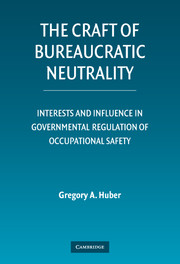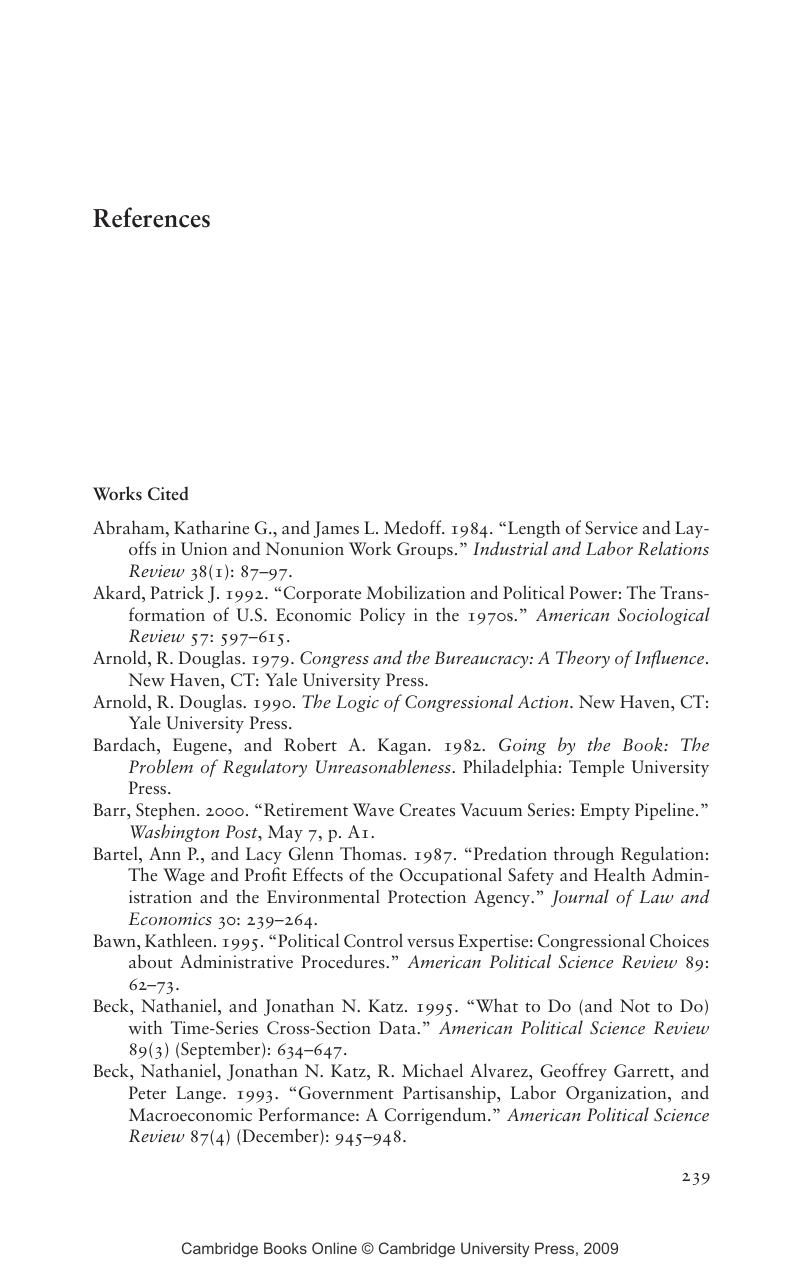 The Craft of Bureaucratic Neutrality
The Craft of Bureaucratic Neutrality References
Published online by Cambridge University Press: 27 July 2009
Summary

- Type
- Chapter
- Information
- The Craft of Bureaucratic NeutralityInterests and Influence in Governmental Regulation of Occupational Safety, pp. 239 - 248Publisher: Cambridge University PressPrint publication year: 2007


